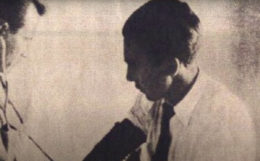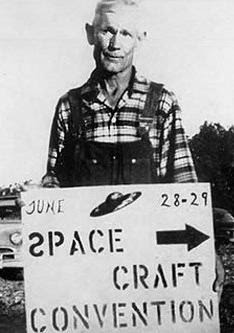by Charles Lear
 Starting in 1947, UFOs seemed to be engaging humanity in a step-by-step process. In the first few years, only the UFOs were reported. Then, there were accounts of occupants showing themselves during what has become known as the 1954 French Wave. An intimate encounter was described by Brazilian farmer, Antônio Villas Boas, in 1957, and Betty and Barney Hill reported that, in 1961,they had been abducted. So far, no one was hurt during any of the encounters, but that would change in 1964.
Starting in 1947, UFOs seemed to be engaging humanity in a step-by-step process. In the first few years, only the UFOs were reported. Then, there were accounts of occupants showing themselves during what has become known as the 1954 French Wave. An intimate encounter was described by Brazilian farmer, Antônio Villas Boas, in 1957, and Betty and Barney Hill reported that, in 1961,they had been abducted. So far, no one was hurt during any of the encounters, but that would change in 1964.
On Tuesday, June 2, 1964, an eight-year-old boy named Charles was playing in a lot behind his grandmother’s laundromat. What happened next was described in the Nov. 1964 APRO Bulletin. Across an alleyway, a black, top-shaped object, which he described as being half as tall as he was at the time, appeared over a building.
According to Charles, he got the impression that it knew he was there. He moved to the left and it moved to the left. He moved to the right and it moved to the right. He crouched behind a block of concrete and then stood up and moved to the right. Once again, the object mirrored his movement. The object then shot towards him, causing him to brace for impact, but it moved up and hovered over him. According to Charles’ grandmother, as she watched through the door of the laundromat, flame came down from the object that completely engulfed him. The object then flew off and Charles ran towards her with his hair on fire. Read more
 The year 1957 was a very interesting one in UFO history. In that year, UFO occupant reports were accepted as worthy of investigation by serious organizations such as the Aerial Phenomena Research Organization and Civilian Saucer Intelligence of New York; Contactees were in the spotlight thanks to the
The year 1957 was a very interesting one in UFO history. In that year, UFO occupant reports were accepted as worthy of investigation by serious organizations such as the Aerial Phenomena Research Organization and Civilian Saucer Intelligence of New York; Contactees were in the spotlight thanks to the